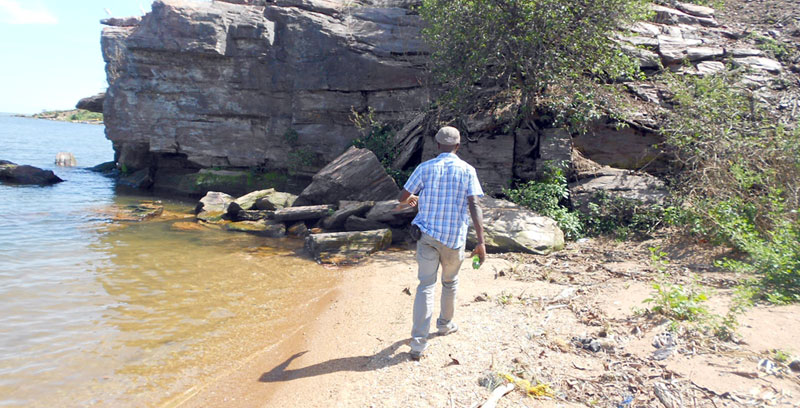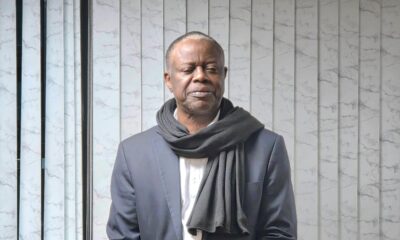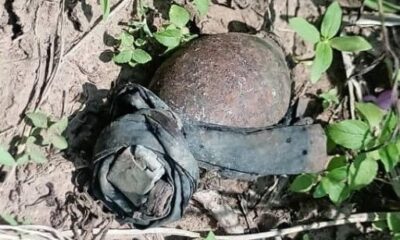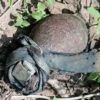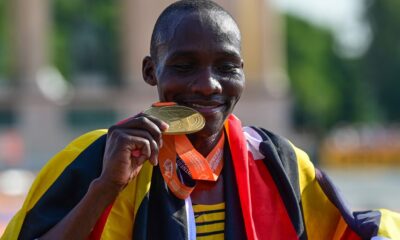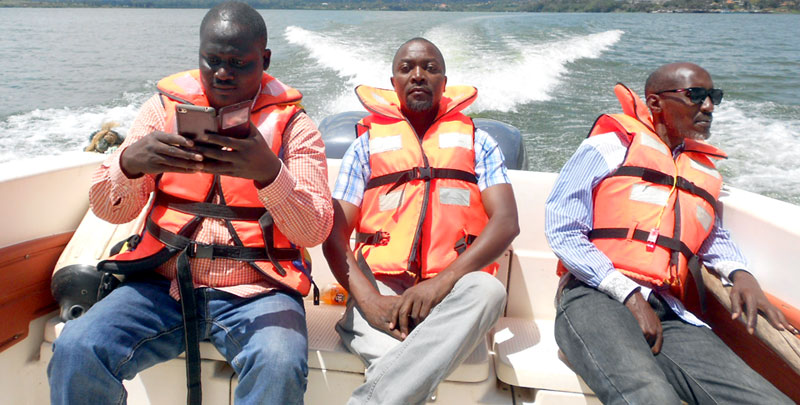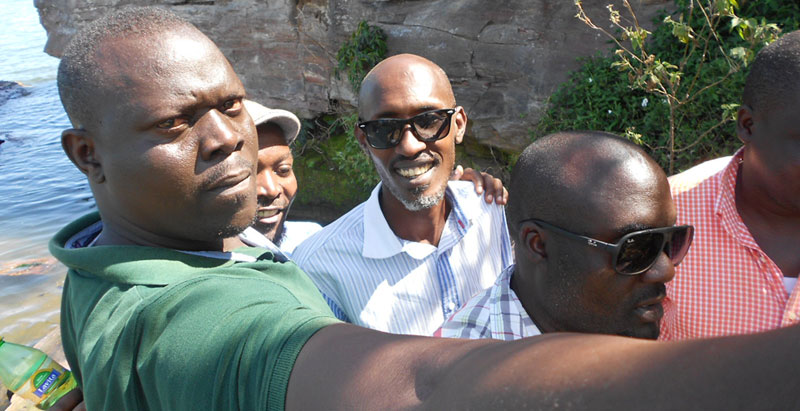human traffickingFeatures
Travel and Tourism: Nalubaale
Could this rock be the origin of Lake Victoria’s local name?
Africa’s largest lake sits calmly in a shallow basin, surrounded by green vegetation. In 1858 British explorer John Speke named it Victoria, after the Queen of England. The locals in Buganda, however, already had a different name for it, Nalubaale. Where did the name Nalubaale come from? The answer could be found in a small rock the size of a bus leaning against Mpata Island in Buvuma district.
Our voyage to this point on October 31, 2017, started at Ripon, a dilapidated historical docking point in Jinja. Ripon’s misery is instantly thrown into one’s face by a dead railroad and some rusty stationary ships. It was a little after midday, sunrays flickered gently on the water surface, and the lake was generally calm.
Our speed boat was as comfortable as they come. Powered by two engines of 115 horse power each, it cut through water with the sleekness of a knife penetrating butter. We kept moving across and taking selfies as it sped further south into the open waters.
Water birds, floating, swimming and softly diving into the water as we passed by added to the harmonious environment, and made me reflect on the peace I felt being out there on the water. It was a sharp contrast to the noisy, polluted atmosphere we had left behind on the mainland.
In about twenty minutes we were riding past Malongo, the main gateway to Buvuma Island. The Kiyindi – Malongo ferry was on the water with cows, cars and people, sailing slowly towards Kiyindi. Memories of Buvuma Island, of Walwanda and Kitamiro dwellings, came flying back.
I enjoyed every moment of my stay in Buvuma on my two previous visits. My first visit there was in 2014 on a government mission. It was a full week of work in fishing communities that was as educative as it was entertaining. I fell in love with the Island. I returned to the Island in 2016 on private business and this time it was a few crazy days and nights.
On my last night, the owner of the Guest House where I had stayed on both visits, an old man with so much experience and many interesting life stories, offered me a drink. For the first time I drank “Eagle Lager,” made by Nile Breweries, and that was because it was the only beer available. One, two, three, I swallowed.
On the fourth bottle, eagles started to fly inside my head. Tightly holding my half empty Eagle bottle by the neck, I slowly escaped from my dosing host and dived into my room, hoping to finish it in the morning. Just as a precaution, because I was totally drunk, I decided to hide my wallet such that in case an intruder came in unheard they would have a hard time finding it.
I hid it from myself instead. The morning came. My cargo had been booked on a boat destined for Kiyindi. I was supposed to go with the morning ferry to get there at least 45 minutes before my cargo arrived. There I got stuck, unable to locate my wallet. Finally, I found it in one of the corners of the mattress after about 20 minutes of absolute confusion. I confessed my sin and swore never again to get close to Eagle Lager. She was not made for me!
Buvuma Island has in the last two decades been steadily losing its natural forest cover mainly due to increased human settlement and the demand for timber and charcoal on the mainland. And now that BIDCO, a vegetable oil company, has bought chunks of land there to plant oil palm, in a couple of years the natural forest will be no more. How I will miss your beauty Buvuma!
As we moved ahead we passed between several Islands including Mukwaya and Mpunga. Near these is another one called Nyenda. Nyenda’s vegetation was vividly intact. Looking small in size, it stood tall and firm among its neighbours. A cloud hovered over Nyenda and started to move towards the mainland. I started to imagine which part of the Victoria basin would receive its rain. My guide explained that Nyenda Island had no people. I appreciated this insight. We humans are by far nature’s worst enemy.
In a short while we were docking at Bunda landing site, on Mpata Island. People, curious to know what the uninvited guests wanted, started to gather. From our initial interactions we understood that this was not where we specifically wanted to dock. We wanted to be at Nalubaale landing site, just a couple of kilometres away from here. After exchanging some pleasantries we jumped onto our boat and headed to Nalubaale.
We were here for two things. One, to present to the fisher community the owner of over 50 acres of land a small part of which they had occupied and two, to reflect on projects we could implement here. The locals had long waited to see their landlord. They were anxious about their future given land wrangles and rampant evictions occurring throughout the country. Through our team leader, also their landlord, Ronald Kiyimba, we assured them that they were safe. We would co-exist here.
Our tour took us to a shore with eye catching ridges, perfect for artistic imagination, perfect for photo shoot backgrounds.
On the other side of the beach are clear white sands, an ideal place for swimming and sun basking. About 80% of the land is untouched natural vegetation, purely balanced by natural factors. You could hear sounds of birds and apes from a distance.
Then there is this rock, Nalubaale. The locals here believe that the name of Africa’s largest lake, Nalubaale, came from this stone. Nalubaale holds spiritual status. Different groups of both traditional and foreign beliefs often visit it to perform rituals.
If Speke discovered Victoria, Beat, Dan, Eric, George, Ronnie, Stephen, and I discovered Nalubaale – The Rock. Welcome to Nalubaale!
Comments



